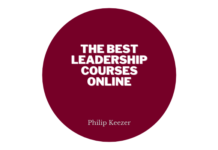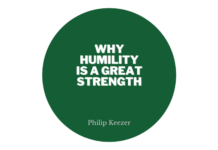In today’s dynamic and highly competitive business landscape, understanding your audience is essential for success. Business leaders who can connect with their audiences on a deeper level are better positioned to create products and services that resonate, build stronger relationships, and drive growth. However, gaining a comprehensive understanding of your audience can be a challenging task.
In this article, Phil Keezer explores what business leaders can do to better understand their audiences and reap the rewards of this knowledge.
Data-Driven Insights: One of the most effective ways to understand your audience is through data analysis. Start by collecting and analyzing relevant data, such as customer demographics, preferences, and behavior patterns. Tools like customer relationship management (CRM) systems, web analytics, and social media insights provide invaluable information. By leveraging these data-driven insights, business leaders can make informed decisions, tailor their products and services, and create targeted marketing strategies.
Develop Buyer Personas: Creating detailed buyer personas is a powerful technique to understand your audience. A buyer persona is a semi-fictional representation of your ideal customer. It includes information about their demographics, pain points, goals, and preferences. By developing buyer personas, business leaders can put themselves in the shoes of their customers, making it easier to relate to their needs and motivations. These personas guide product development, marketing strategies, and communication efforts.
Conduct Market Research: Market research is a fundamental tool for understanding your audience. It involves gathering information about industry trends, competitive analysis, and customer feedback. This research helps business leaders identify gaps in the market, gain insights into what their audience is looking for, and stay ahead of the competition. Various research methods, such as surveys, focus groups, and online reviews, can provide valuable information to refine your understanding of your audience.
Listen Actively: Listening to your audience is vital. Actively engage with your customers through social media, email, and customer support channels. Encourage feedback, questions, and suggestions. Use their input to refine your products or services, address concerns, and demonstrate that you value their opinions. An open and responsive dialogue fosters trust and connection between your business and your audience.
Monitor Online Conversations: In the digital age, a wealth of information about your audience can be found in online conversations. Social media platforms, forums, and review websites are excellent sources for gauging customer sentiment. Regularly monitor these spaces to gain insights into what your audience is saying about your brand and your industry. Address any negative feedback promptly, and use positive comments as testimonials to build credibility.
Embrace Customer Journey Mapping: Understanding your audience involves grasping their entire customer journey. Create customer journey maps that illustrate the various touchpoints your audience encounters when interacting with your business. By visualizing the customer experience, you can identify pain points and areas of opportunity. This helps in creating a seamless and satisfying journey, ensuring your audience remains engaged and loyal.
Engage in Competitor Analysis: An often overlooked aspect of understanding your audience is studying your competitors. By analyzing their strategies and the audience they cater to, you can gain insights into what works and what doesn’t. This knowledge can help you differentiate your business and better serve your target audience. Keep a close eye on your competition’s strengths and weaknesses and use this information to your advantage.
Seek Feedback and Adapt: Regularly seek feedback from your audience through surveys, reviews, and direct communication. When you receive feedback, be open to constructive criticism and willing to adapt. Feedback provides an opportunity to make necessary improvements and refine your understanding of your audience’s evolving needs and desires.
Employee Training and Awareness: Your employees are the frontline ambassadors of your business. Make sure they understand the importance of understanding your audience and how to do so effectively. Provide training and resources to help them engage with customers, collect feedback, and convey valuable insights to the leadership team. A well-informed workforce is instrumental in building strong customer relationships.
Stay Current and Flexible: Audience preferences and behavior evolve over time. Business leaders must remain current and adaptable to keep pace with these changes. Continuously monitor market trends, technological advancements, and emerging consumer behavior patterns. Stay ahead of the curve to ensure your business remains relevant and responsive to your audience’s needs.
In conclusion, understanding your audience is a continuous process that requires dedication and effort. Business leaders who invest time and resources into comprehending their audience are better positioned to create lasting connections and drive success. By embracing data-driven insights, developing buyer personas, conducting market research, actively listening, monitoring online conversations, engaging in competitor analysis, creating customer journey maps, seeking feedback, training employees, and staying current, business leaders can gain a deeper understanding of their audience, leading to long-term growth and success in today’s competitive business environment.
If you found this article interesting. If you did, stay in touch on Twitter and Facebook and Medium.













